This monochrome Isuzu is as red, and as rad, as they come, complete with fender badges advertising its “Lotus-tuned handling” and even larger stickers alerting passersby to its high-winding DOHC 16-VALVE engine, a big deal at the time. That time could only be 1989, and with the second-gen I-Mark at the end of its cycle, Isuzu let it go out with a bang.
The RS weighed just 2,167 lbs., and the new 1,588-cc engine belted out 125 hp at 6,800 rpm. You had to thrash this pocket rocket to go fast, but it was a fun dance partner. It’s relative rarity when new and that need to use it hard means survivors are very rare now.
There were many other versions of this basic car, including other performance versions, but the Lotus-tweaked twin-cam RS was the fastest.
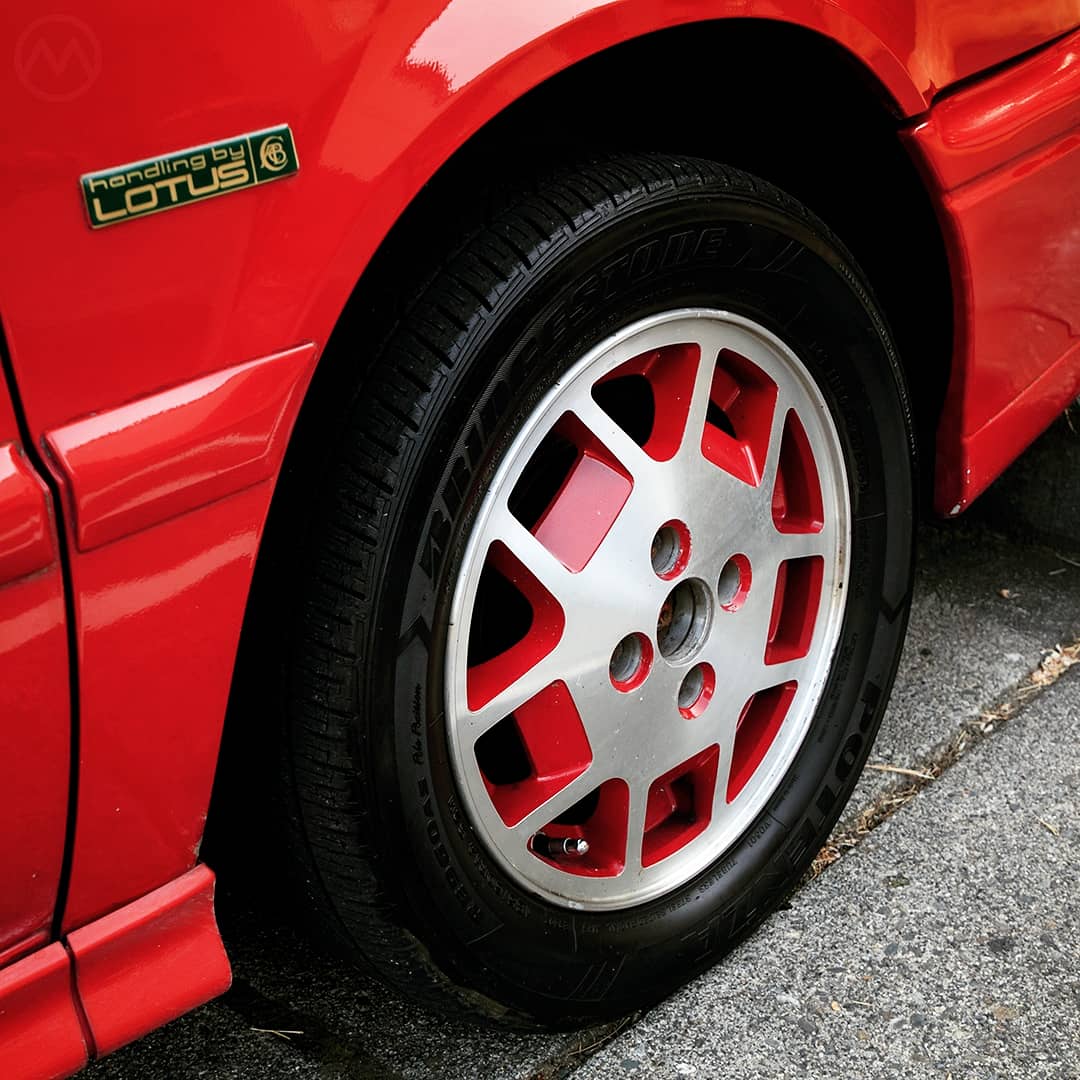
The Lotus connection came about from both automakers both falling under the umbrella of General Motors, Isuzu in the 1970s and Lotus in 1986. If it hadn’t been for GM, that connection would never have happened, but GM’s ownership was a mixed bag for the Gemini. It produced a good car, but it also alienated one of Isuzu’s longest and most loyal partners, ItalDesign.
General Motors and Gemini
At home, the I-Mark was the MkII Isuzu Gemini, called the “Gemini FF” at first because of its front-wheel drive configuration.
The MkI Gemini had been part of GM’s T-car program, and closely related to the Chevrolet Chevette, Opel Kadett C, and their many global variations. That included at least two three other versions in North America, the Pontiac T1000/Acadian, the Buick Opel Isuzu, and Isuzu’s own original I-Mark, the Buick with the Buick bits removed. While most Japanese automakers were going front-drive around the turn of the 1980s, Isuzu kept the T-car going (as in America) for several more years, but development work on a successor had begun by 1981-82.
The Gemini FF would be the company’s first entirely home-grown front-drive car. Its first front driver, the 1983 Florian Aska, was part of GM’s J-car program and again shared much with the Opel Ascona C, Holden Camira, and MkII Vauxhall Cavalier, but at least its styling was done in Japan, with future Nissan star Shiro Nakamura working under Isuzu’s design boss Yoshimi Inokuchi between stints overseas.
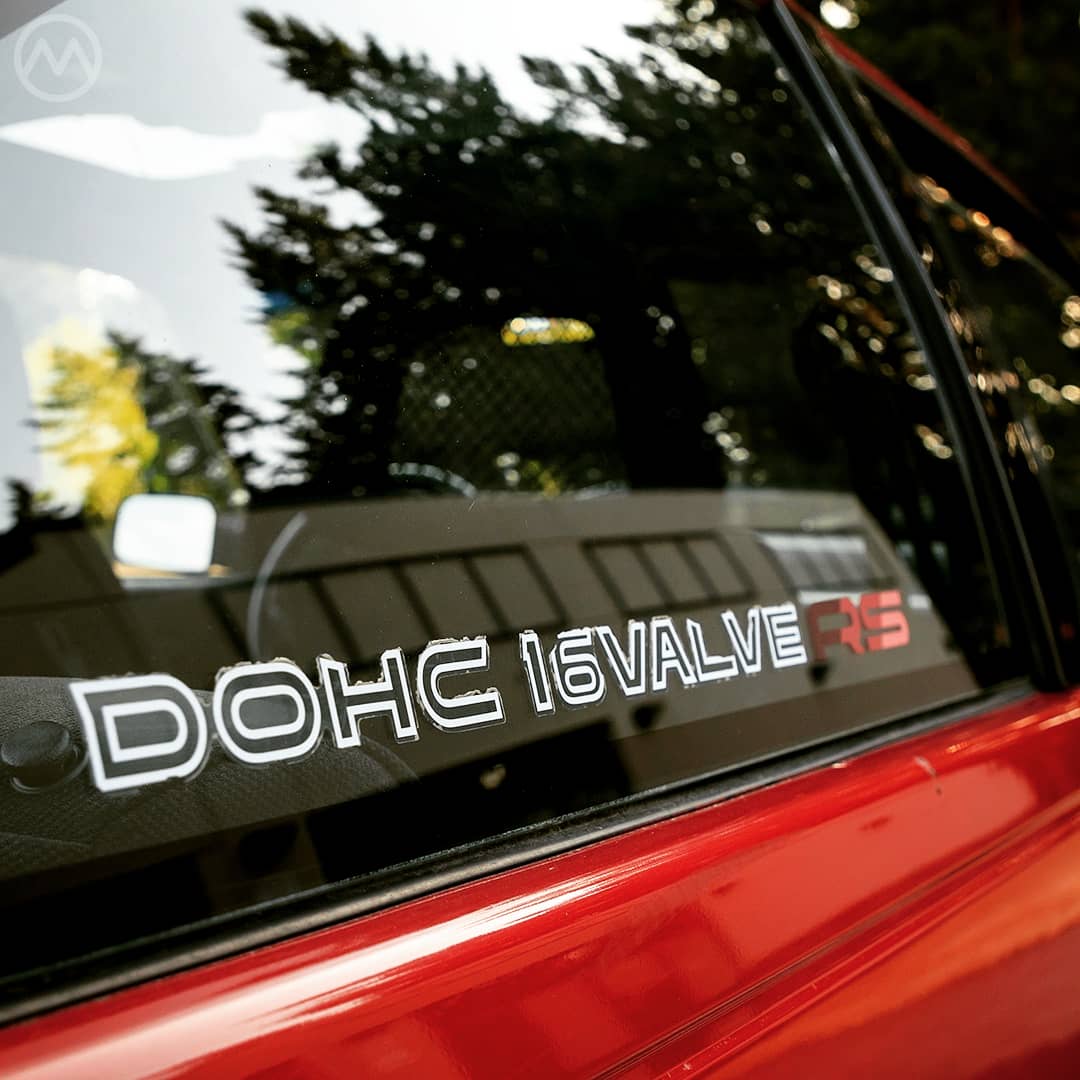
The new Gemini, however, would not be like the J-car program. Instead of building a bunch of related designs in many different places and configurations, the MkII Gemini would be one car built in one place but with many different badges applied, and it would be small and economical enough to do battle with modern cost-cutter alternatives like the Hyundai Excel, which emerged around the same time. In GM platform speak it would be the “R-body,” no relation to the big ol’ Chryslers of the late 1970s.
For this important car Isuzu outsourced the cosmetic design work to Giorgetto Giugiaro and ItalDesign.Giugiaro had been a partner for a long time, designing the 117 and MkI Piazza/Impulse coupes for the Japanese firm. He came up with a very sleek looking sedan and hatchback for the Isuzu brief, both evolved from the striking and aerodynamic Piazza/Impulse coupe.
Presented with the design before it was frozen, GM proceeded to alter the Isuzu/Italdesign proposal, which annoyed Giugiaro in much the same way he himself had annoyed Fiat not much earlier by styling original Seat Ibiza. (Fiat and Seat were in the midst of a contentious divorce).
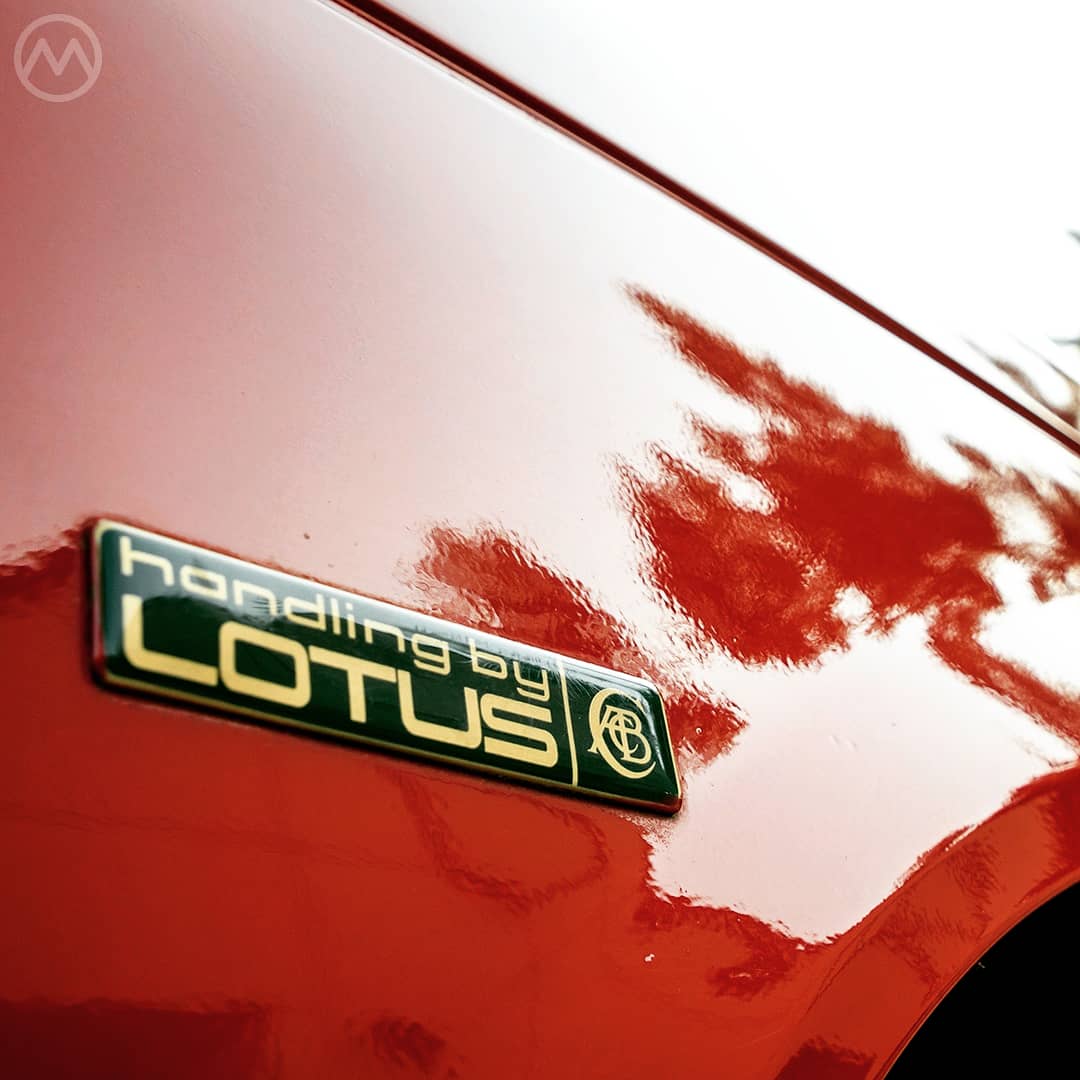
The Ibiza, not coincidentally, was very similar in style to the Isuzu. For many years ItalDesign did not acknowledge any participation in the Gemini design, though it does today.
Gemini to I-Mark
The Gemini FF got built though, and was quite successful in Japan and abroad.
In the USA it was sold by Isuzu themselves (who had finally established a dealer network in 1981 after years of supplying GM with captive imports) and by Chevrolet (and eventually Geo), but it had a variety of other names. In Canada it was old as the Pontiac Sunburst, in some places it was the Holden or Chevrolet Gemini. In Europe, where it faced very stiff competition including the Ibiza, it was sold as an Isuzu but never very popular.
It actually went on sale in the USA before it went on sale in Japan, despite being built at Isuzu’s facility in Kawasaki (not the manufacturer but the place), Japan. There’s some debate about just where all the Geminis and I-Marks were built, the older Kawasaki facility or the newer Fujisawa plant. By the 1990s, Isuzu’s passenger cars were mainly built at the latter.
As with most Japanese cars, there were many more versions at home than abroad, though it did not have as wide a range of engines as most of its competitors. A 1,297-cc model sat at the low-end in some markets, and most were powered by a 1,471-cc four with 70 hp or 110 hp in turbocharged form, though that second one appeared only later in the run. A 1,487-cc diesel was also offered.
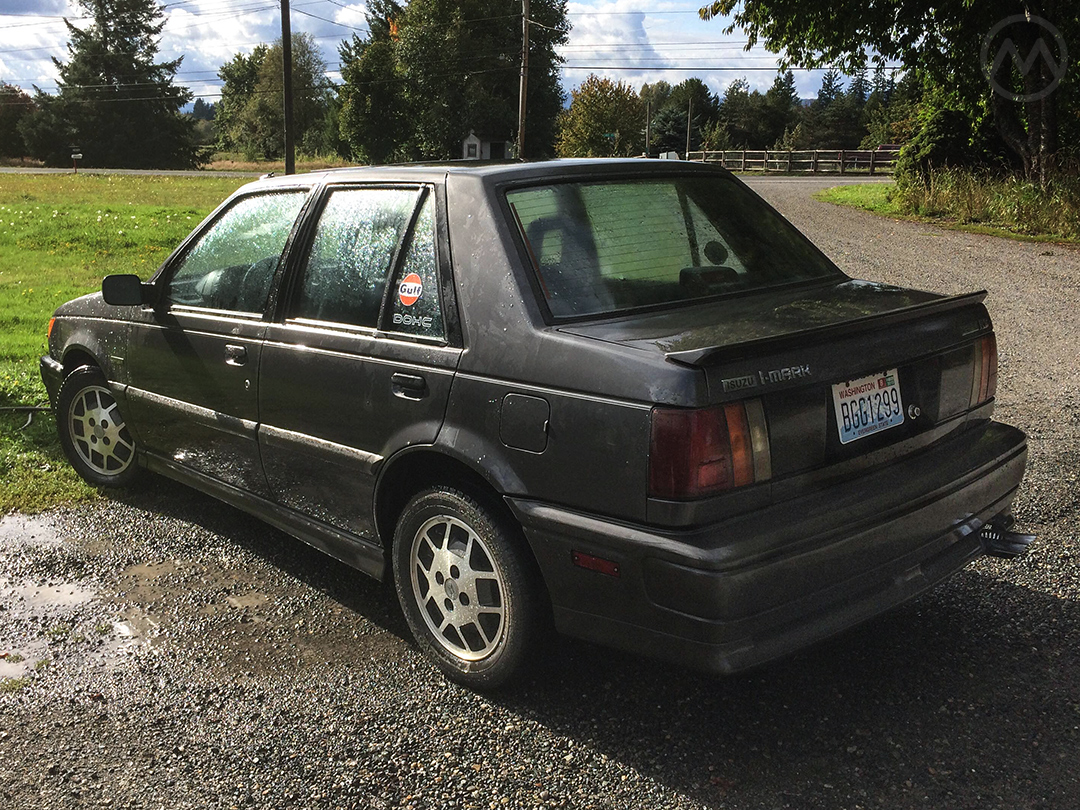
The turbocharged I-Mark RS was a bargain-bin, pint-sized sports sedan for the time. 110 hp wasn’t much even then, but for a 1.5-liter, 2,000 pound car, it was plenty. The Turbo came to the USA in 1987, and you could get it on either the hatchback or sedan. Though it’s the RS Twin-Cam that’s our primary focus here, the turbo actually had more torque at a much lower range in the rev band (120 ft.-lbs. At 3500 rpm vs. 102 at 5400 rpm), making it feel a bit quicker off the line.
In early 1987 the “FF” was dropped from the Gemini name at home and the car given a light cosmetic refresh, mostly up front where the headlights and corner lights got a more aggressive look. Now that the old T-body Gemini was gone, the “FF” designation was surplus to requirement.
At home there were tuner versions from ZZ and most of all Imrscher, a regular partner of Isuzu’s in the 1980s turning out performance versions of the Bighorn SUV (aka the Troooper) and the Gemini, among others. But those cars did not come stateside.
When GM bought Lotus in early 1986, it immediately began figuring out what projects could be improved with Hethel’s expertise, and this led to a productive relationship between Isuzu and Lotus, the latter borrowing much Isuzu tech for the Elan M100.
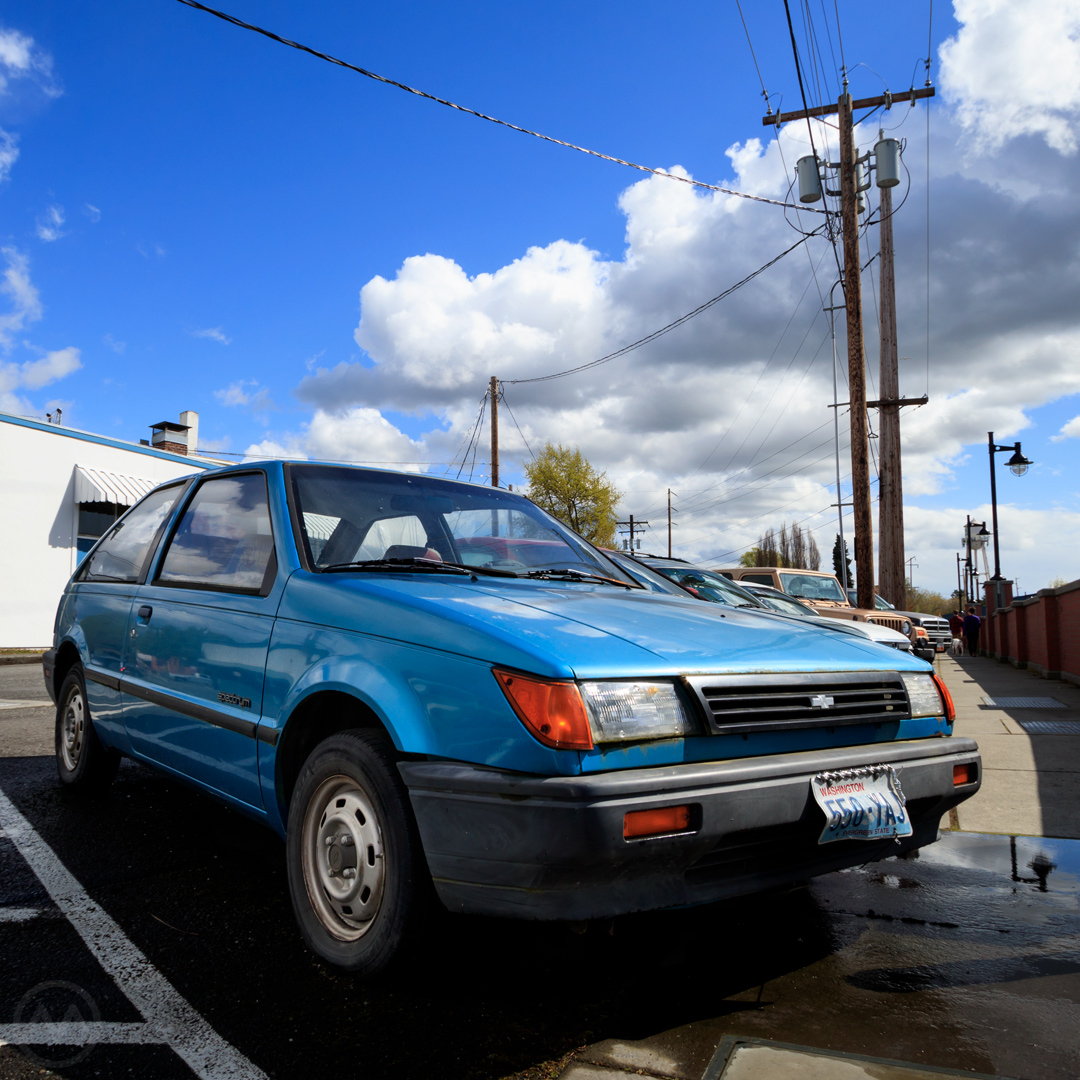
In the other direction, Lotus tweaked the wayward handling of the Mk1 Piazza/Impulse and helped make the Gemini/I-mark better as well. “Handling by Lotus” badges first appeared on the turbocharged I-Mark in 1988, and underneath they had bigger sway bars, beefier dampers, and stiffer springs.
I-Mark RS Twin-Cam
Very late in the year Isuzu dropped the I-Mark RS Twin-cam, with a 1,588-cc engine with a brand new 16-valve head, the latest in hot hatch fashion at the time. You had to rev and rev to get the most out of it, but now it could push out 125 horsepower.
It came only in the three-door hatch body, and Isuzu also modified the interior. Sport buckets were standard, but real Recaro seats (and this car has them) were optional. It also got 32 mpg on the highway, though probably not if you lead-footed it as intended.
Best of all it still had a base price of about $10,000, which was quite affordable considering its power at the time. It wasn’t as quick as a Dodge Colt Turbo or a 16-valve VW GTI, but the USA had fewer hot hatch choices than Europe at that time and with I-Mark sales beginning to slip despite a 1987 refresh and the new mechanical pieces, Isuzu was keen to cut you a deal if you wanted one.
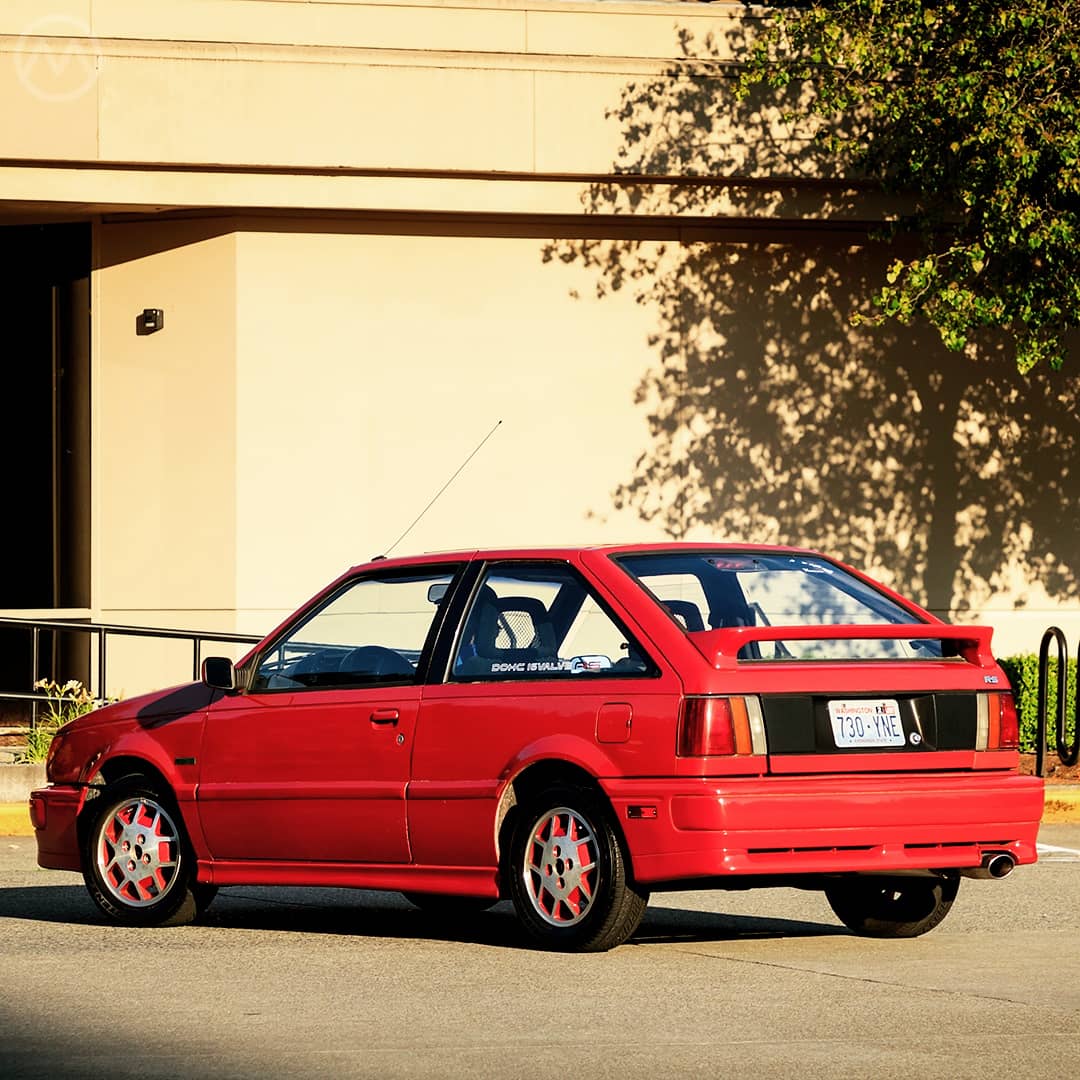
Part of the problem was Chevrolet’s huge success in selling the exact same cars for less money and from a larger dealer network. Though the RS twin-cam was an Isuzu exclusive, the Chevrolet Spectrum mirrored the other models. The lineup of Chevy captive imports was wrapped into a new brand, Geo, in 1989, and for about eight months the Chevy Spectrum became the Geo Spectrum, sometimes with both a Chevy bowtie and a Geo globe on it.
At the end of 1989 Isuzu’s U.S. car lineup changed almost completely. The MkII Gemini/I-Mark went away, replaced by the much more visually radical MkIII Gemini (done with Nakamura’s input), called the Stylus in the USA. The Impulse was also replaced by a MkII version, which had a double at Geo, the Storm.
By then U.S. sales of Isuzu’s cars (and European sales too) had slowed to a trickle, and the brand had become far better known for trucks. Gradually, the make abandoned cars in various export markets to focus exclusively on SUVs, and even in Japan Isuzu’s car lineup gradually winnowed into rebadged, reworked Hondas, courtesy of a new partnership at home.
We’ll have to give those other Isuzus some love in the not too distant future, but we spied the red RS twin-cam seen in this post delivering pizza like it was still 1989 early in the summer of 2021, and had to tell this tale to suit.

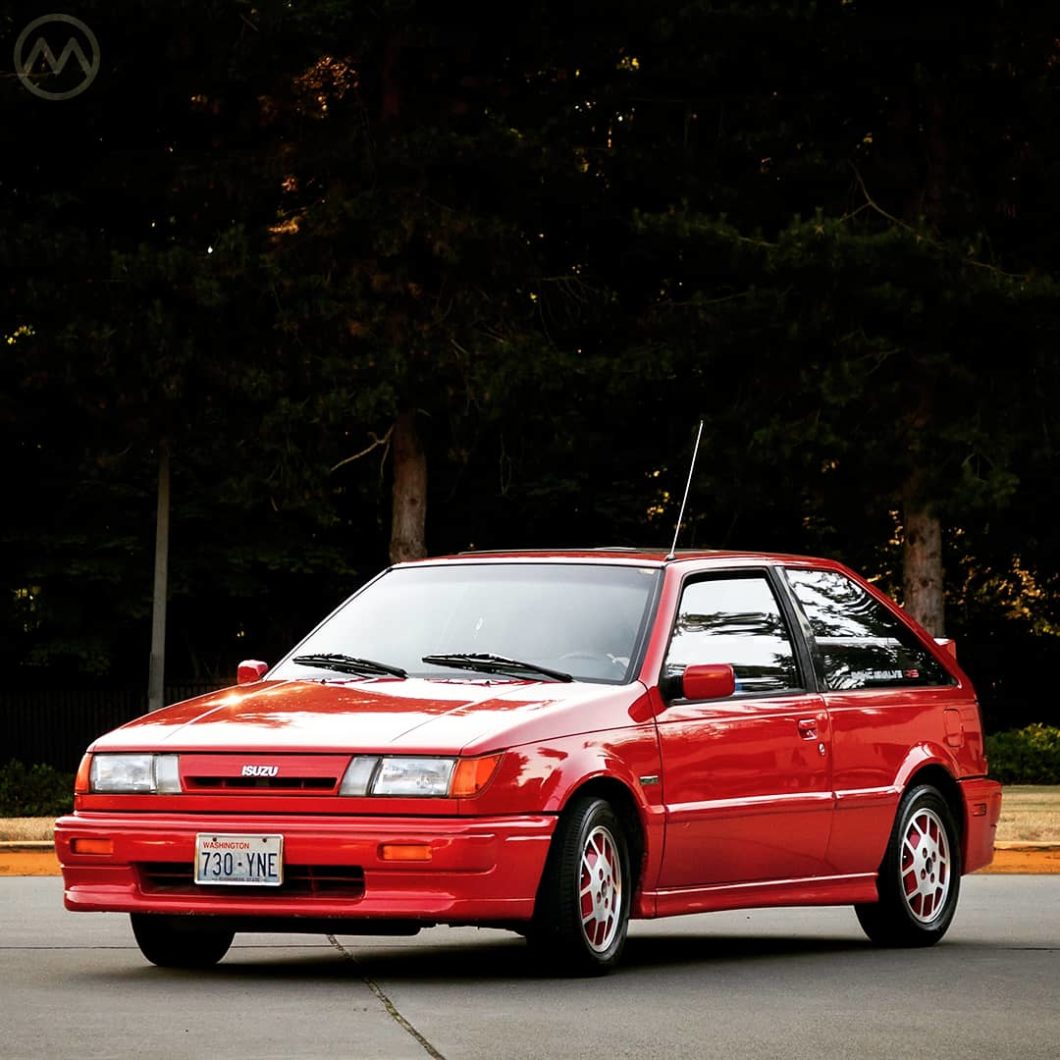
I’ve seen that red car! I first saw it while riding my bike on Sunday back in November 2020, and I was way over the moon! I’ve gone past it almost every weekend since, weather permitting. I love seeing it so much and really want to meet the owner. Have you met him/her? Do they also own the grey one?
I keep wondering if the picture I’m seeing are my old Isuzu I-Mark. Lol I loved my Ricardo seats and that car moved!!! Couldn’t afford parts anymore, because they longer made them, and had to let it go. Very sad day 😭